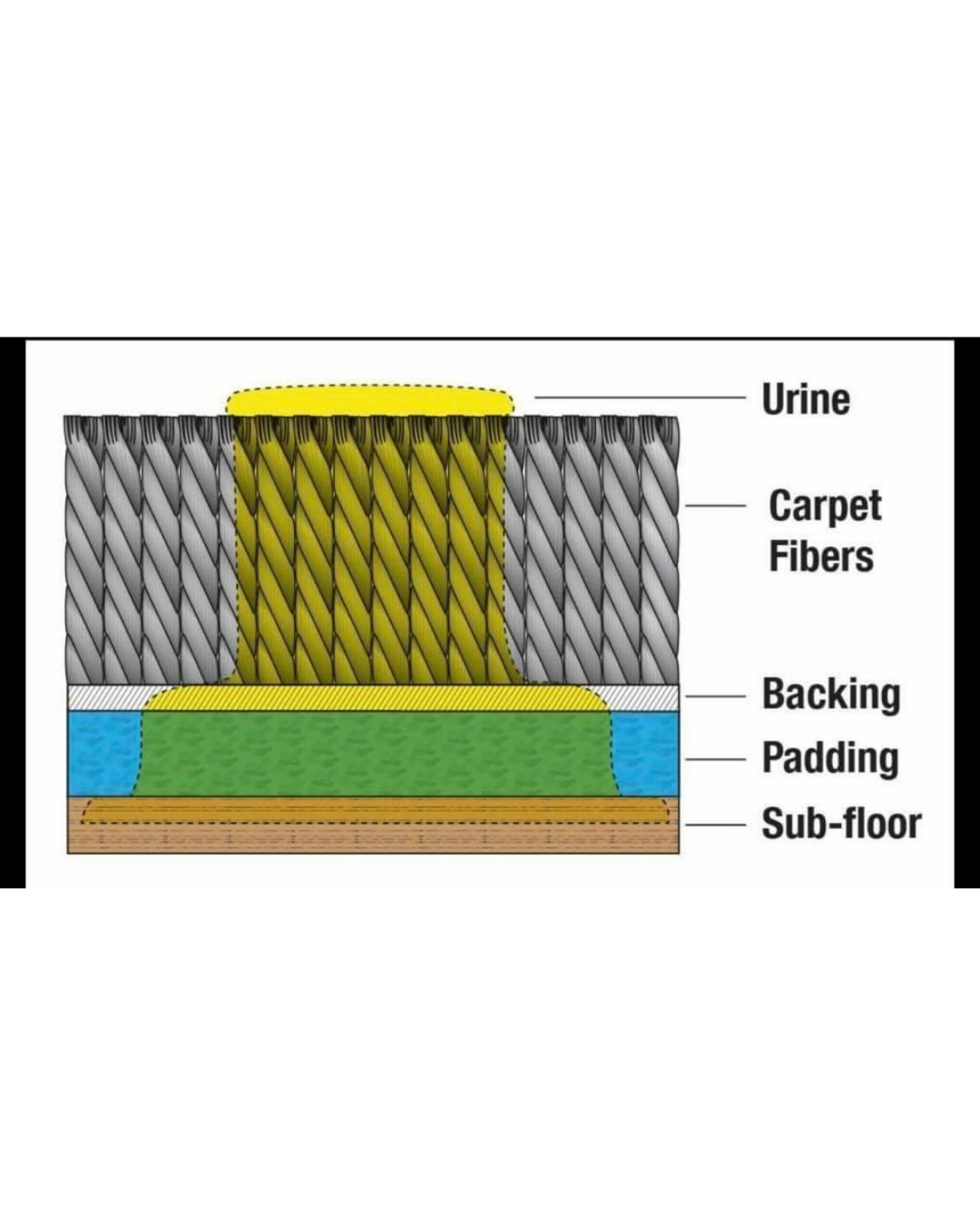A Growing Challenge in Today’s Rental Market
With more rentals embracing pet-friendly policies, the presence of animals in units has increased significantly. As a result, pet urine damage has become a common and costly flooring concern property managers face.
While accommodating pets helps with retention and tenant satisfaction, the aftermath can result in persistent odor, permanent stains, and costly carpet or subfloor replacement. Knowing how to assess and treat pet urine issues is essential to minimize long-term damage and protect your bottom line.
Why Pet Urine Creates Long-Lasting Problems
Pet urine is not just a surface stain; it is a multi-layer contamination problem. Urine penetrates through the carpet fibers into the carpet backing and padding, and can even reach the subfloor beneath.
This creates several challenges:
Persistent odors that return after cleaning
Stains that reappear once the carpet dries
Bacterial growth in warm, moist environments
Subfloor damage that may require structural repair
The severity depends on several factors:
Type and size of animal (cat urine is especially pungent)
Frequency and location of accidents
How quickly the accident is addressed
While many urine spots are visible to the naked eye, others are not. Our team inspects or assesses the area using UV light and a moisture detection probe as needed to identify and confirm the presence of urine, especially when the source of odor is not immediately evident.
Why Pet Urine Can’t Be Fixed with Surface Cleaning
This diagram shows how urine seeps deep into the carpet. It starts in the carpet fibers, soaks through the backing, and continues into the padding and even the subfloor.
Because the contamination spreads beyond the surface, standard cleaning methods aren't enough.
The Science Behind Urine Damage
Urine contains urea, ammonia, uric acid, and other corrosive compounds. When it dries, it leaves behind urine salts, which draw moisture from the air and reactivate odors even after the stain looks clean. These salts are the primary cause of lingering odor and must be broken down with the proper treatment.
Improper cleaning can worsen the problem. For example:
Scrubbing damages carpet fibers
Overwetting can spread the urine further
Store-bought spotters, especially those marketed for pet stains, often cause permanent color loss
Professional Treatment Options
Standard Cleaning vs. Pet Treatment
Standard hot water extraction, while effective for general soil removal, does not address urine contamination. Specialized enzyme treatments are required to break down urine salts and neutralize the source of odor.
Our Process:
1. Inspection to assess the areas affected by urine using a UV light and moisture detection probe as needed to confirm the presence
2. Enzyme pre-treatment targeting odor-causing residues
3. Hot water extraction to rinse out residues and remove remaining odor-causing compounds
Unlike store-bought cleaners that typically mask odors without addressing the underlying issue, this process provides a much more thorough and lasting solution.
When Replacement Becomes Necessary
If stains or odors persist after treatment, this usually indicates that the urine has penetrated the carpet padding or subfloor. At this stage, additional cleaning is unlikely to resolve the issue, and carpet replacement (and sometimes sealing the subfloor) becomes necessary.
We never promise full removal, and you should be wary of anyone who does. While professional cleaning can improve odor and appearance significantly, only full replacement guarantees complete resolution.
Supporting Property Managers
We understand how critical fast, cost-effective solutions are during unit turnover. Our team:
Provides free in-person assessments
Uses safe, effective cleaning products suitable for occupied or vacant units
Has extensive experience handling pet-related carpet concerns in rental properties
Prompt, professional service means your units can be restored quickly and more affordably when possible.
The Bottom Line
Pet urine damage is a common but manageable reality in rental properties.
At Pioneer Carpet Cleaners, we help property managers across San Luis Obispo assess and treat urine damage with expert cleaning, transparent recommendations, and targeted solutions.
Contact us today to schedule a free estimate and learn more about our pet urine carpet treatment for rentals.
Frequently Asked Questions
Q: Can professional carpet cleaning remove pet urine?
Yes, especially when using enzyme treatments combined with hot water extraction. While we cannot guarantee 100% removal, professional cleaning can significantly reduce odor and staining in most cases.
Q: How do I know if the urine has reached the padding or subfloor?
Recurring odor, stains that return after drying, or discoloration on the underside of the carpet are red flags.
Q: When should I replace the carpet instead of cleaning it?
If professional enzyme treatment has been done and odors or stains remain, the urine has likely penetrated the subfloor. At this point, carpet and pad replacement is the best option, possibly with subfloor sealing.
Q: What is the best pet urine carpet cleaning process for rentals?
The most effective approach combines an enzyme treatment to break down urine salts with hot water extraction to flush out the remaining residues.
Q: Do you offer pet urine carpet cleaning for rentals in San Luis Obispo?
Yes. We provide expert urine odor removal service throughout San Luis Obispo County, working closely with property managers to ensure your rentals are clean and ready for the next tenant.
Q: Can you guarantee complete removal of pet stains and odors?
No. And no one reputable should. We do our best to significantly improve conditions, but full removal requires full replacement in cases where urine has soaked below the carpet.

